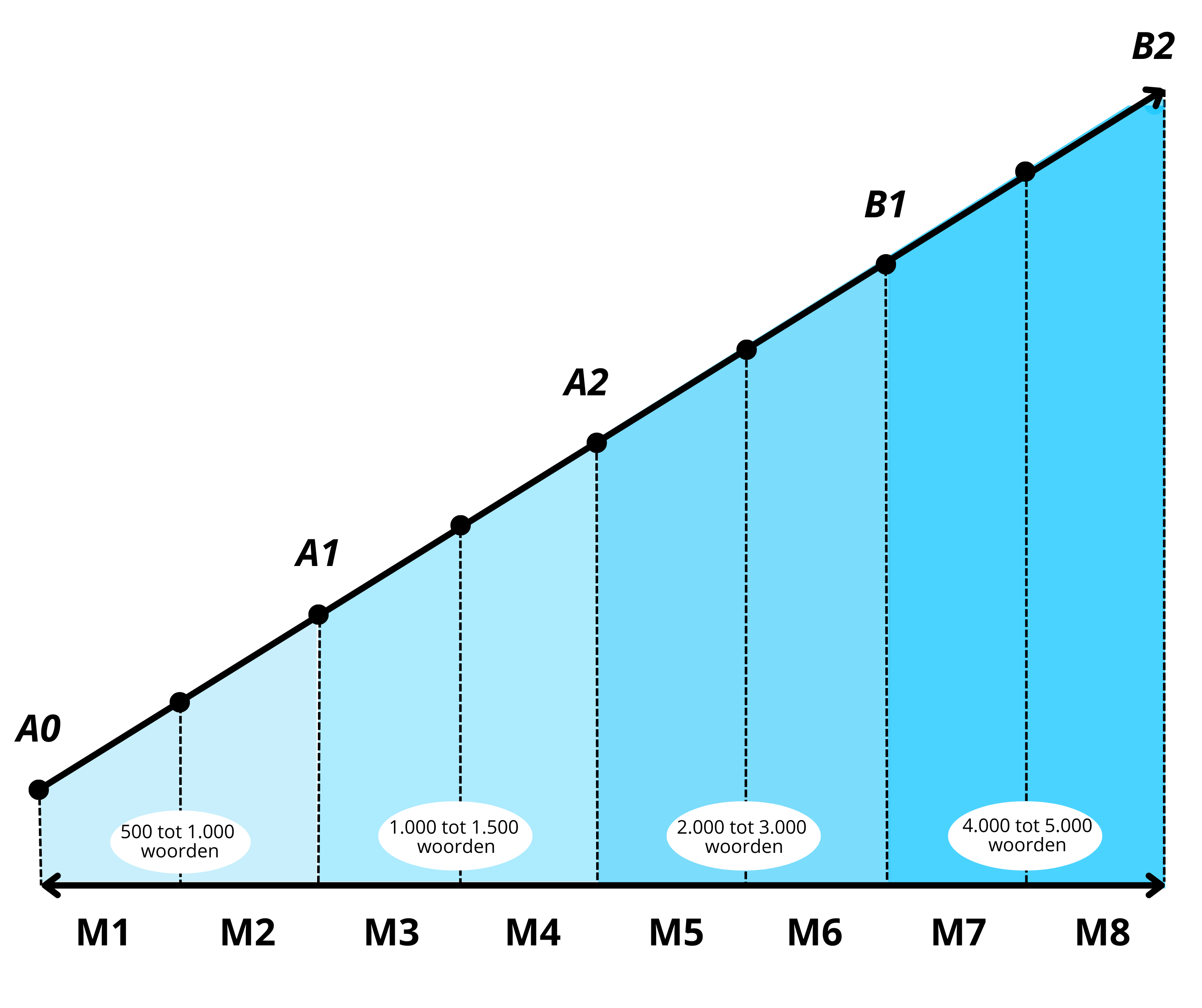
Language Proficiency Levels
Assessment According to the Common European Framework
At TTC Talen Training Centrum, we assess foreign language proficiency based on the criteria of the Common European Framework of Reference for Languages (CEFR). The CEFR language proficiency levels set standards for all foreign languages and allow for the comparison of exam levels and certifications across different languages.
We evaluate four skills: speaking, reading, listening, and writing.
Level Descriptions
Basic User (A0-A2)
A0 – Complete beginners (unofficial CEFR level) who are starting to learn a foreign language from scratch.
A1 – Can understand and use everyday expressions and very simple phrases aimed at meeting basic needs. Can introduce themselves or others and ask questions about personal details, such as where someone lives, people they know, and things they own. Can communicate in a simple way if the interlocutor speaks slowly and clearly and is willing to assist.
A2 – Can understand isolated sentences and frequently used expressions related to everyday life (e.g., personal and family details, shopping, immediate surroundings, work). Can communicate in simple and routine tasks that require direct exchange of information. Can describe their background, immediate environment, and basic needs in simple terms.
Independent User (B1-B2)
B1 – Can understand the main points of clear, standard input on familiar matters, such as work, school, and leisure. Can handle most situations that arise when traveling in areas where the language is spoken. Can produce simple connected text on topics of personal interest. Can describe experiences, dreams, hopes, and ambitions and briefly give reasons or explanations for plans or opinions.
B2 – Can understand the main ideas of complex texts on both concrete and abstract topics, including technical discussions in their field. Can interact with native speakers with a degree of fluency and spontaneity that makes regular communication possible without strain for either party. Can express themselves clearly and in detail on a wide range of subjects, present arguments for and against, and explain viewpoints by highlighting advantages and disadvantages.
Proficient User (C1-C2)
C1 – Can understand a wide range of demanding, longer texts and recognize implicit meaning. Can express themselves fluently and spontaneously without much obvious searching for expressions. Can use language flexibly and effectively for social, academic, and professional purposes. Can produce well-structured, clear, and detailed text on complex subjects, showing controlled use of organizational patterns and cohesive devices.
C2 – Can understand virtually everything heard or read effortlessly. Can summarize information from different spoken and written sources, reconstructing arguments and accounts in a coherent presentation. Can express themselves spontaneously, very fluently, and precisely, differentiating finer shades of meaning even in complex situations.
Detailed Level Breakdown
These levels can be further divided using numbers after a decimal point (e.g., A1.1, A1.2, A1.3, B1.1, B1.2, B1.3…) for a more precise classification of language proficiency.
For example:
A1.1: Learner has mastered ¼ of the A1 level.
A1.2: Learner has mastered ½ of the A1 level.
A1.3: Learner has mastered ¾ of the A1 level.
A1: Learner has mastered all skills required at this level.
Modules and levels

